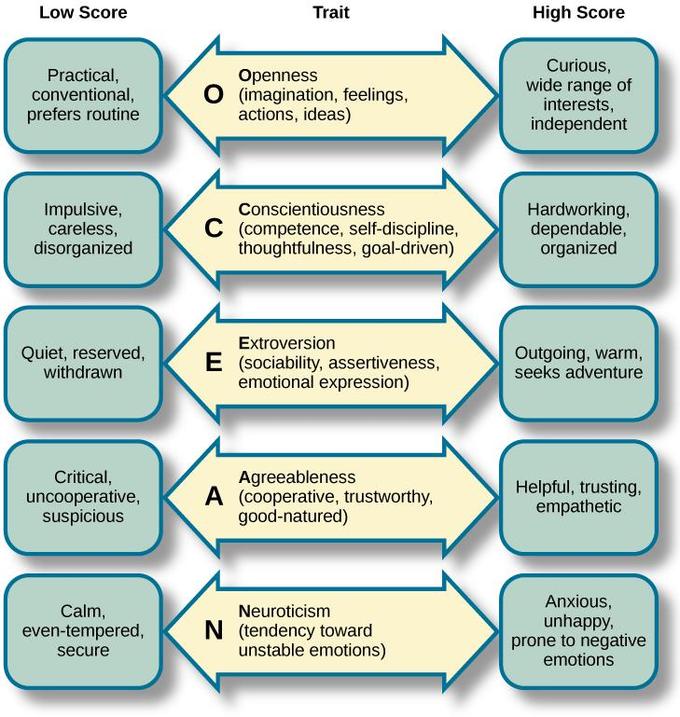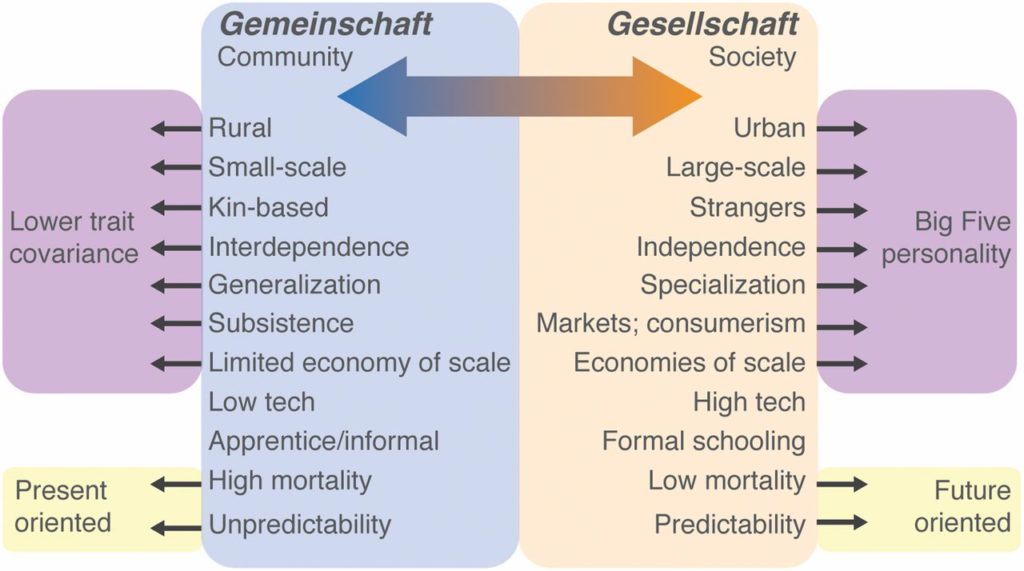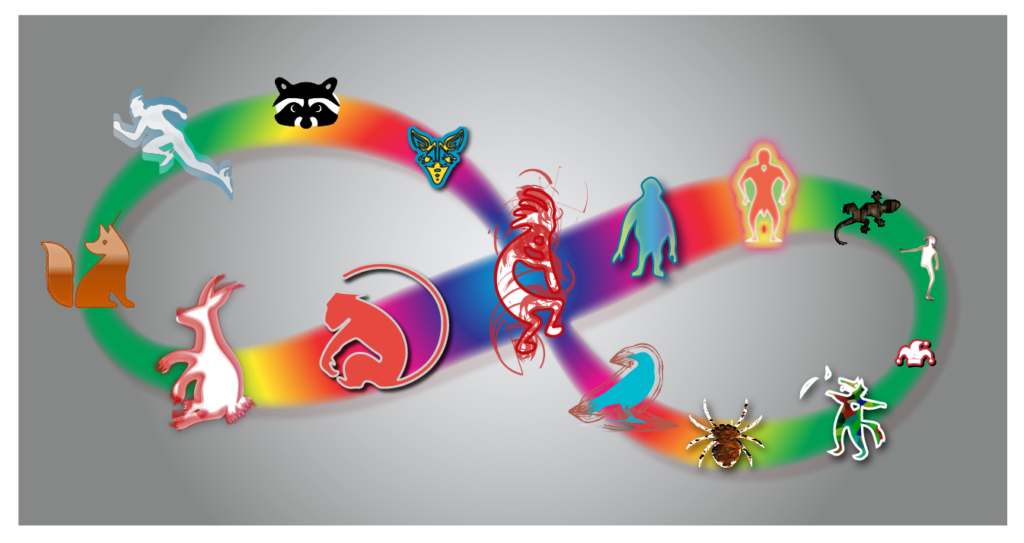Human:Nature
This is a broad category, inclusive of any global behaviors.
We are every bit as natural as Blue-Green algae or Pterodactyls but we can’t accept that. We hold unshakable convictions on what people are and how people should behave yet in the face of perpetual disappointment we are mystified. Perhaps humans are like every other animal: Living out an innate strategic script with limited degrees of freedom from it.

Have you ever met someone who was nice or cheerful to a fault? They are all about being positive and cooperative but you glimpse in them tiny reflections of rage, sorrow and cruelty? They are at the office, at the PTA, and abundant in church groups. As they grew up with people who couldn’t stand their anger or spontaneity, these vital human traits were shoved downward until not even they themselves knew the behavior was there anymore. These are the psychological materials and the mechanism of the Shadow. Any part of us in the shadow is prevented from maturing naturally and finding the right place in a rich personality. Shadow materials grow dusty and miserable, paralyzed or barbaric. They raise themselves without guidance or human contact. As exiles from the country of self we see them as repellent refuges who may be hated openly. The shadow material is externalized in other people as lazy, crazy or slutty for example. The frequent connection to anything foreign is a way of distancing themselves from these forbidden elements of self as much as possible.
When someone in our lives needs to relate to us on a level that includes shadow material we deadlock, rage, and reject over the very existence of the problem. Frozen families and crippled relationships live here, if they live. The only way to surmount this logjam is to open the oubliette where we have hidden them and begin by recognizing who is in that dungeon. You can’t instantly free them, they are barbaric and immature, they do not know how to behave. First we do an inventory of our exiles and accept their existence. Then we make visits to them and hear their story. Then slowly we let them find their place in us again, bit by bit. People who have done their shadow work are more trustworthy, their decisions are more reliable and their kindness is more genuine. They listen better.
The harsh and moralistic tone of people denying their shadow is how they represent themselves as more trustworthy, etc. but prevents them seeing the “fine print” their secret inner lawyer attaches to every contract. If someone hasn’t done their shadow work but is forced to encounter their shadow material, the result is often a psychological crisis and breakdown. If the work has been done the same situation may result in a rueful smile or a humble (but not shamed) acceptance. An explosion in the open air is far less destructive than a buried and contained one.
The amazing poet Robert Bly is the hands down best writer on the the shadow.
I’m not 100% confident that I’m right about this but I’m intrigued. This is about something that sits in our human blind spot. These things excite me because anything found in the collective human blind spot represent something robotic we must do and are not supposed to know about.
I was writing about a behavior within a culture which is required of anyone who wants to be a part of that culture. That awkward sentence I just wrote is pointing out the missing word. I was poking around in my word bag and I thought “It’s the opposite of a taboo, what the hell is the opposite of a taboo? ” I bet in anthropology there IS a term for this but while taboo swam up out of the jargon to join the rest of the English language, no natural opposite followed.
A taboo forbids. A taboo is serious as a heart attack but when I looked up antonyms for taboo the result was: allowable, permissible. These are weak and mild opposites to the “crime scene tape” of TABOO. Lacking such an opposite, we are forced to turn the word taboo back and forth for this purpose as a negative or positive:
Positive “It is taboo to tickle the president’s love handles”
Negative: “It is taboo to NOT compliment the emperor’s mustache”
You probably have bigger problems on your mind than this. We can create phrases easily enough “Compulsory behavior” “Obligatory behavior” though I stand by the idea that TABOO is in a different class of word. The phrases sound like a stern warning and taboo sounds it releases a curse. It’s weird for the English language, unstinting as it is about vocabulary, to leave a prominent gap for a simple concept year after year unfilled. My hypothesis is that MUST NOT behavior, varying as it does from culture to culture, is something we are all supposed to be painfully aware of but MUST behavior flows from an unconscious source. That dynamic is why we lack a word for the opposite of Taboo.
Tension Force is the name I give to the innate push and pull between progressives and conservatives. Physical tension force is a physics concept and can be pictured as the area of rope between teams playing tug of war. In a well-matched tug-of-war, that area doesn’t shift very much but that stability is reached by both teams trying their hardest to win.
Tension force is homeostasis achieved through intense opposing forces. If one of our teams wins the political tug of war it’s guaranteed to be a bad or even disastrous moment for society. One party systems have ugly results.
There are psychological patterns that are consistently reliable predictors of a progressive or conservative view on politics and culture. The personality test used to measure and correlate this connection is the famous Big 5 Test. Here is a quick visual to explain what is measured and the characteristics that typify scoring high or low.

These are the outcomes that populate our country with Progressives and Conservatives:
- High scores in conscientiousness trended conservative on both economic policy, (favoring hard work and organization) as well as social policy (strict adherence to traditional social norms).
- High scores in openness trended progressive on economic policy (favoring new programs and interventions) as well as social policy (favoring complexity and novelty).
- High in agreeableness leaned progressive on economic policy (wanting to help the disadvantaged) and but conservative on social policy (the desire to maintain harmony and traditional relationships).
- High scores in neuroticism leaned progressive on both (oh, shut up).
- High levels of the extraversion trait had no significant effect on predicting a person’s policy position but correlated strongly to being fun at parties.
Although nurture and socialization are certainly a part of shaping these political tendencies, the people nurturing you are your closest relatives and the culture you are being socialized to is the one they have chosen to live in. The matrix seals neatly around you. There’s bound to be a genetic relationship to these scores, and tests significantly confirm that. So every population produces a balance of people apparently fated to be in one camp or the other. Either group can be principled and logical, but those principles and logic are canalized by personality presets. Whatever play is in the system waxes and wanes with important societal upheavals and movements.
The consistent percentages of people born with these traits and concomitant beliefs is the underlying, invisible homeostasis that creates the Tension Force around us. As we plead with the other side to see reason or curse each other for hopeless blind idiocy we can take some comfort in the idea that humanity absolutely requires this struggle. Tension force is how we weigh the balance between the past and future, between tradition and reform.
Addendum
However, technological change has dropped us into a new and unfamiliar medium for connection and communication. The new medium so completely separates us from engagement with the other side, that each side has become LIKE a one-party country unto themselves. The area of Tension Force has become the weak spot, attacked by opportunistic infections.
The situation makes us “fish in a barrel” for those aiming to divide and conquer us, then gather riches from the ruins left behind.
(I’m talking about Putin you idiots!)
Some German (obviously) psychological researchers did a really nice job on the country vs city meme “Gemeinschaft vs. Gesellschaft” That is community vs society, adding the interesting insights about present vs future orientation and the amazing detail that the Big 5 personality test works in the city WAY better than the country. It all has the ring of common sense, society needs a wide range of specialized types of people while the country needs people who can pitch in to any task as needed.
These are the 6 love styles as understood by current psychology.
- Eros – Classic idealized romantic love.
- Ludus – Multiple love interests with an emphasis on controlling behavior. Lying, cheating and deception are common among people who experience love as Ludus.
- Storge – Love based on Storge takes time, it requires genuine liking and trust of a partner; friendship leading to romance.
- Agape – The powerful desire to want to take care of a partner—a parental or nurturing type of love.
- Mania – Unstable, impulsive and needy. They fall in love quickly, but their love tends to consume them and burn out before it can mature.
- Pragma – Based on common sense, reason and careful consideration. Practical concerns (and safety) underlie this type of love.
The order isn’t important.
When first exposed to these I thought they were awesome, they really help to make sense of behaviors that usually remain undefined. For example as someone who in the past often matched the Storge description, deep feelings arose for me out of solid liking and trust and not until. Being approached by a partner in full Eros mode would thrill me with their interest and passion. That same passion often overwhelmed me with its speed and intensity, making me hesitate in a “deer in the headlights” way that, in turn, made them feel uncertain. The ability to recognize the love style that is approaching makes it possible to anticipate how things are unfolding and respond mindfully.
When people encounter this taxonomy of loving, they often relate to it as a “personality type” tool where they are to pick themselves out of the list. Can you guess what they pick? Most people (according to themselves,) are Eros types. In second place comes Agape with nobody in a close 3rd. The idealized romantic Eros style is what you’d want to be out of this list. It sounds like true love expressed in the healthy, normal, successful way…that mostly occurs in movies. Agape is the popular second choice because so many people feel like they are the more generous, giving one in the relationship and possibly the unfairly unappreciated one. Obviously, most people are wrong about these choices and just trying to feel good about themselves. Ludus, Storge, Mania, and Pragma are the “Not so fantastic four” in this lineup. Storge is the most acceptable of this group because it’s kind of relatable and it doesn’t seem wrong on the face of it, just not very romantic. Pragma next because it’s that, Mania or Ludus. Pragma feels like the opposite of romantic love, practical and transactional. It’s like going into business as a couple. To choose Pragma as your “type” seems like admitting it didn’t go well for you, and here’s how you compromised and settled. Finally, in a popularity showdown between Mania and Ludus, Mania wins because people would rather be messed up than evil. Continue reading
The Part that Sounds Sensible
- The Learning Perspective: B.F. Skinner is the theorist behind the flat mechanics of the learning perspective. He argued that adults shape the speech of children by reinforcing the babbling of infants that sound the most like words and that children learn language from punishment and reinforcement. B.F.Skinner was a behaviorist who’s only tool was a hammer and theorized that every type of behavior was a nail. His theory of language through conditioning briefly dumbed down the whole conversation.
- Interactionist Theory: Interactionists argue that language development is both biological and social; That language learning is influenced by the desire of children to communicate with others. This drive to communicate and share is a powerful motivator. The mistake is concluding that this motivating desire is a causal force rather than a related and helpful one.
- The Nativist Perspective: Developed by Noam Chomsky. He argues that humans are biologically programmed to gain knowledge and that all humans have a language acquisition device (LAD). The LAD contains knowledge of grammatical rules common to all languages. The LAD also allows children to understand the rules of whatever language they are listening to. Chomsky suggests that universal language acquisition behaviors in humans reveal that it is innate. Obvious but unseen till Chomsky.
- The Language Instinct: A 1994 book by Steven Pinker. He argues that humans are born with an innate capacity for language. Pinker sees language as an ability unique to humans, produced by evolution to solve the specific problem of communication among social hunter-gatherers. He compares language to other species’ specialized adaptations such as spiders’ web-weaving or beavers’ dam-building behavior, calling all three “instincts”. In calling language an instinct, Pinker means that it is not a human invention in the sense that metalworking and even writing are. While only some human cultures possess these technologies, all cultures possess language.
You (make-believe loyal reader ) know I am absolutely sure that language is innate. There is a circular but sensible reason it is innate. Everyone has to talk because everyone else does. Language is an essential survival trait in a social species. That means It is too important to leave it up to us. Can you imagine if children had to depend on parents to ensure that they could speak? There would be a large random distribution of mute humans everywhere, trying to get by. The same forces that guarantee the action of your heart and lungs provide you with an automatic phase of intense language acquisition that clicks on when your body says it is time. Continue reading
From left to right:
Reynard the fox, Mercury, Nanabozho, Tanuki, Sun Wukong, Huehuecoyotl, Kokopelli, Raven, Tokoloshe, Anansi, Papa Legba, Wisakedjak, Blue tongue lizard, Till Eulenspiegel, Saci-Perere
The phrase “collective unconscious” seems like a neat concept but not a literally true thing. Where would it exist? Are we supposed to believe in a spiritual dimension that we all have a drinking straw stuck into? To me, the collective unconscious (CU) is more like a shared language module, distributed to each of us at birth. It’s like Windows accessories, included in every installation.
The archetypes of the CU are words and phrases from this shared language module. They are unique icons with a consistent meaning and their arrangement tells the story. Some icons are always protagonists, the listener’s POV along the tracks. Some archetypes represent a challenge, motivation or temptation. Some provide structure. The background is created through the placement of the initial icons. This becomes the substrate of expectation and context. Once we know the background, we probably know a lot about where we’re going and what we will encounter. Think of how much you know about these two stories:
Once there was a girl living in a deep, dark forest. She was beautiful and kind and worked hard to care for her Mother who was very sick…
Jack the foolish donkey lived on a farm where he was well cared for by the kind farmers, yet he dreamed of seeing the bazaars and palaces of faraway lands…
I bet you can tell me the “keyframes” of each story; the salient encounters or events. You can tell me the general outcome and upshot of each one and how they eventually bring the story home to its origin but at a higher level. The only thing you can’t tell me is whether it was a bear or an ogre this time around if you follow my meaning. Certainly, there are junctures along the way where the story might break off to create an alternative tale but with enough patience, we could flow-chart the alternatives as well.
The icons are consistent, regardless of language or culture. They are the essentials of our stories, and stories are the foundation of everything we understand, not in an intellectual way, but as this particular human self.
I am planning a series of articles on the collective unconscious, archetypes, and symbols. Trickster is an example of an essential role required in some tales. There must be a wild and funny, -think-outside-the-box, winning through cleverness character in these stories. Bugs Bunny, (in his cartoon days, not his later career as a corporate spokesman) was a perfect modern trickster.
Around the world, people create tricksters in the image of their culture. It’s like when Shakespeare plays are not staged as if in Elizabethan England but on a 20th-century battlefield, or the highest executive floors of a corporate skyscraper. The setting is ever-changing, the story is eternal.
It appears that some fairy tales have been in circulation for 6000 years. That is solidly within the Neolithic period. There is every chance that a story you read to your child at bedtime was also told to an excited child before history was invented.
Aerial time lapse of the Nam Pan market, Myanmar
 John Allen Chau was a 27-year-old American missionary from Vancouver Washington who dreamed of bringing Jesus to the hostile tribe on North Sentinel Island known as the Sentinelese. In a sense, he did, before dying in a volley of arrows. This is a story about many things, including several that are regular subjects of this blog. Buried in this sad stupid story is a raw example of tension force. If you’ve been following that idea, see if you can find the brief area where it comes into focus here.
John Allen Chau was a 27-year-old American missionary from Vancouver Washington who dreamed of bringing Jesus to the hostile tribe on North Sentinel Island known as the Sentinelese. In a sense, he did, before dying in a volley of arrows. This is a story about many things, including several that are regular subjects of this blog. Buried in this sad stupid story is a raw example of tension force. If you’ve been following that idea, see if you can find the brief area where it comes into focus here.
Sentinel Island is 700 miles off India’s mainland. It’s illegal to go there because:
A. They attempt to kill anyone who tries and succeed fairly often.
B. They are an uncontacted hunter-gatherer society, a stone-age tribe of humans who know not a goddamn thing about the messy, stressed out human hives buzzing around them. This makes them a rare treasure despite their murderous diplomacy. What’s in it for us? The mere fact of their untouched existence is like a unicorn in a sacred grove. They exist like the long-hidden heart of wild humanity, steadily beating without us. They aren’t chained up to our machine: They have never tasted the poverty or long hours of the shitty, non-essential work they would be assigned on the periphery of our world. They have an unshared language, names, totems, myths and stories buried deep in the secret world of their lives. They laugh at things, they undoubtedly sing. They track the moon and watch the stars. They surely have a name for us and our crazy machines and our snooping ways. And they have a policy toward us: FUCK OFF!
But there’s a much more important reason not to contact them. Officials say the islanders have lived in isolation for nearly 60,000 years and therefore have no immunities to common illnesses such as the flu and measles. Advocacy group Survival International said that by contacting the community, Chau may have passed along pathogens that have the “potential to wipe out the entire tribe” of about 50 to 150 people. Continue reading


